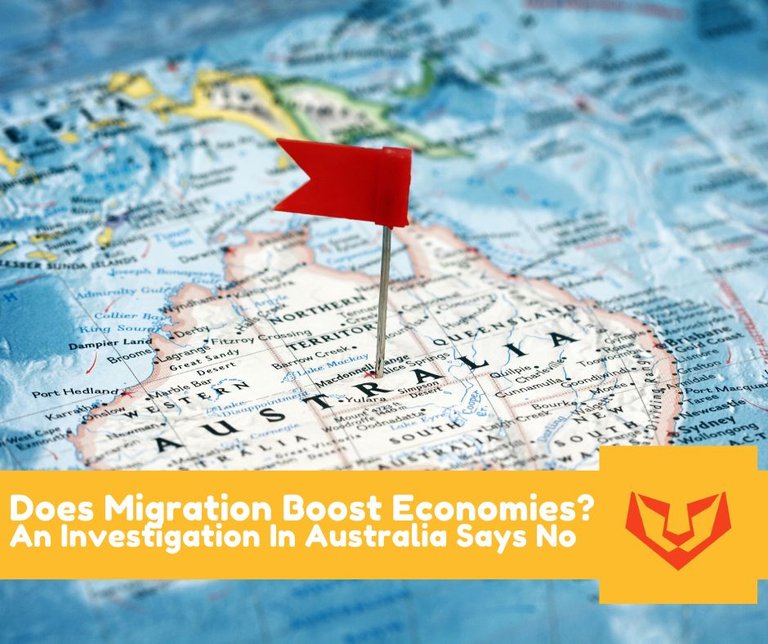Does Migration Boost Economies? An Investigation In Australia Says No

Does Migration Boost Economies? An Investigation In Australia Says No
Australia is witnessing a remittance boom with a record AUD 38.2 billion sent overseas in 2024 by residents living and working in the Australia. This surge is being caused by a record migration level, rising international student numbers and a growing sense of familial responsibility among migrant workers who continue to financially support loved ones back home.
As migration reshapes the social and economic fabric of Australia so too does it redefine the country’s impact on global money flows. This is a relatively new issue that has emerged down under and authorities still are unsure of it’s impact on the Australian economy.

Migration Driving Remittance Records
In 2024, Australia’s population grew by 445,900 people with net overseas migration accounting for 340,800 of that increase. The overall population now sits at 27.4 million with 31.5 per cent (8.6 million people) born overseas one of the highest proportions since 1891.
This rise in migration has brought with it a significant increase in international remittance flows, with India and China emerging as the largest recipients.
According to Money Transfer Australia AUD 7.3 billion was sent to India and AUD 5.35 billion to China in 2024, accounting for nearly a third of Australia’s total remittances. While India received a higher dollar amount, Australia contributed just 3.8 per cent of India’s global remittance inflows when compared to 12.1 per cent for China.
Other regions are also feeling the benefit. For smaller economies in Africa and the Pacific, remittance money is not just appreciated it has become an essential lifeline. For example, Australian remittances to Nepal were over 20 times larger than the official foreign aid provided by the Australian government. Pacific nations such as Vanuatu (66% of its remittances), Tuvalu (49%) and Solomon Islands (45%) also rely heavily on funds sent from Australia.

The Personal Impact of Remittance
Behind the billions of dollars are a rising amount of personal stories of sacrifice, love and commitment. A Western Union report titled The Value of Remittance highlights the human impact with 90 per cent of migrants in Australia sending money to family overseas in the past 12 months and 67 per cent say this ability influenced their decision to migrate.
The report reveals that on average, migrants send 11 per cent of their annual income as remittance. These payments often cover essentials like food (67%), healthcare (60%) and accommodation (42%). For many families, these funds are a lifeline. Over half of migrants (51%) believe their families would fall into poverty without these payments. 57 per cent say their remittances cover medical costs, and 53 per cent say the money enables education access.
According to Aman Sethi, managing director of JICS Australia sending money home is deeply embedded in migrant culture. “People work hard here and feel a duty to help their families overseas,” Sethi explains. “Even small amounts, once converted, have a big impact back home. It’s often about repaying the support they received to come to Australia in the first place.”

The Emotional and Financial Strain
While remittances are a source of pride and purpose for migrants, they also come with emotional and financial pressure. The Western Union report found that 69 per cent of migrants feel overwhelmed by the responsibility of supporting loved ones. Over half (56%) have taken on extra hours or a second job just to maintain their remittance payments, while 62 per cent have had to reduce the amount sent due to rising living costs.
This financial balancing act has taken a toll. 58% of migrants report feeling lonely, prioritizing work over personal relationships. Yet, 81 per cent also say that being able to send money gives their life a sense of purpose. 73 per cent believe that moving to Australia was the only way they could support their family financially.
Australia’s largest migrant communities have shifted dramatically in the past decade. Between 2013 and 2023, the Indian born population more than doubled, from 378,480 to 845,800 making it the second largest migrant group. Chinese born residents followed at 644,760, while traditional European groups such as Italians and British have declined, reflecting demographic ageing and changes in global mobility patterns.
These new demographics are mirrored in remittance trends. Israeli migrants sent the highest amount per capita, averaging AUD 35,960 per person in 2024, likely due to investment transfers rather than typical family support. French migrants followed with AUD 24,505 per person. In contrast, migrants from Thailand, Vietnam and Papua New Guinea sent lower amounts per capita, yet these funds still carry significant local impact.
While remittances clearly benefit recipient families and economies, they also raise questions about Australia's internal economic dynamics. Adam Creighton, chief economist at the Institute of Public Affairs (IPA), argues that soaring remittance flows can undercut the local economic benefits of immigration.
“While it’s understandable that international students and workers remit money home, it does reduce the amount of money being spent within Australia,” Creighton said. “This challenges the narrative that a growing migrant population always boosts the domestic economy.”
Indeed, as the international student population swells particularly from India and China remittance outflows are expected to continue rising. Money Transfer Australia predicts that remittances in 2025 will exceed this year’s record, especially with net migration projected to surpass 1.3 million over the 2023–2025 financial period.
Image sources provided supplemented by Canva Pro Subscription. This is not financial advice and readers are advised to undertake their own research or seek professional financial services.
Posted Using INLEO